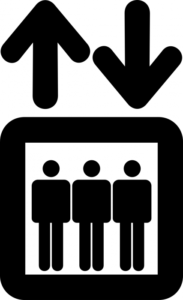Year after year, I’m increasingly convinced that we will one day see the dawn of that great utopian vision foretold by WALL-E of a truly advanced, carefree human society. But in the meantime, as we trudge through the crude world beyond our mystical screens together, the rudimentary ability to make eye contact with the people around us remains surprisingly useful, and can be accomplished in just four steps.
Step 1: Put the phone down
I get it. Your phone is one of your Horcruxes, and in its absence the fabric of your very existence feels vulnerable. You clutch it tightly and tenderly, as though it were the comforting hand of a lover guiding you through a sketchy part of town at night.
But becoming temporarily untethered from your phone in public is like learning to ride a bike without training wheels: you’re much more versatile without the attachment.

Step 2: Observe your surroundings
Okay, so you’ve taken the first big step and, gazing around, you now realize that you are in fact surrounded by frighteningly unfamiliar humans. Don’t panic. You’ll notice that many of these people are vulturishly tethered to their phones just like you were, and blissfully unaware of your existence. Instead, shift your focus to the attentive humans who may actually notice you.
Step 3: Remain calm, but alert
At this point, you may be feeling a bit like Frodo when he was exposed to the Eye of Sauron, but try to take a deep breath and relax. The Nazgûl will only hunt you if you openly question a trendy social narrative—a delicate skill to be covered in another guide.
For now, just concentrate on keeping your eyes forward and alert for a potential window of ocular acknowledgement.
Step 4: Point your eyeballs at their eyeballs
Don’t overdo it and gawk. Just aim for a brief glance. The pupil is the bull’s-eye, but if you can only manage to connect with an eyebrow at first, don’t sweat it. The effort still counts and will pay off later. (For some people, it may be helpful to think of other people’s heads as giant, hyper-realistic emojis.)
As you continue to swap existence-affirming glances, the now-glistening mirror neurons in your brain may cause the corners of your mouth to begin moving unexpectedly. Good. This means that you’re almost ready to start practicing the next skill: reading social cues.
